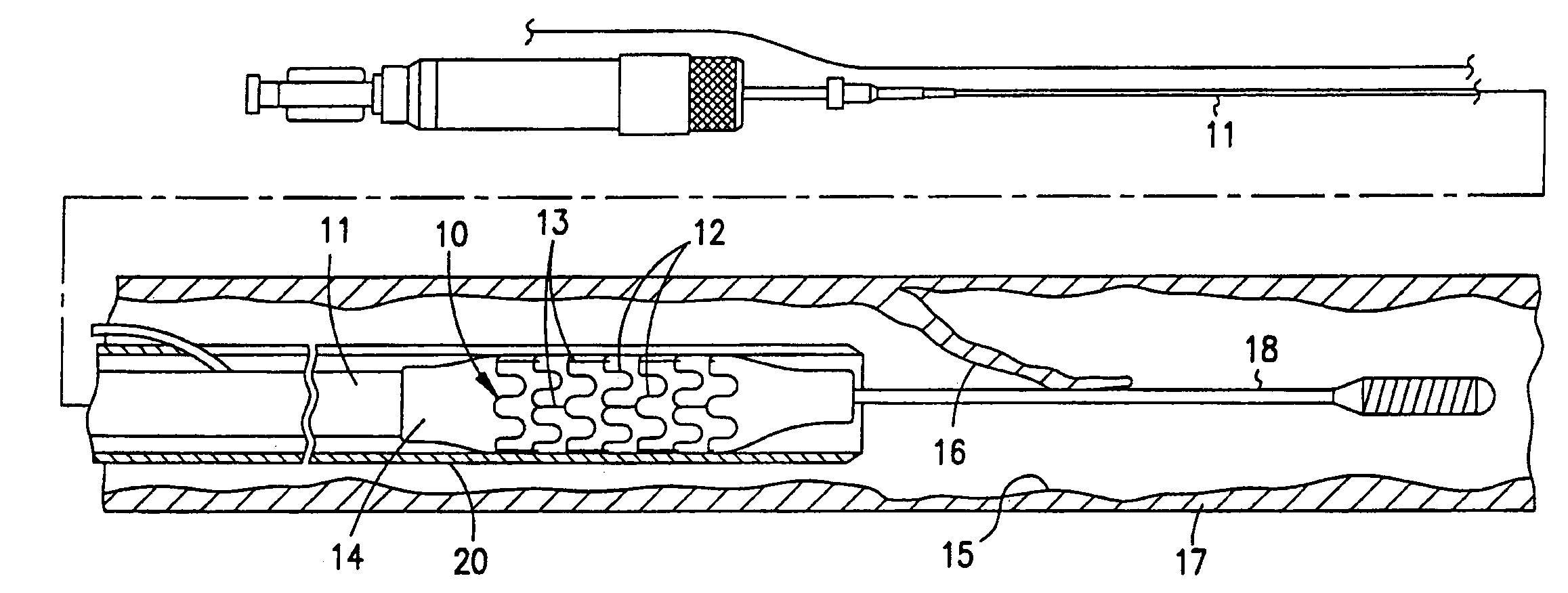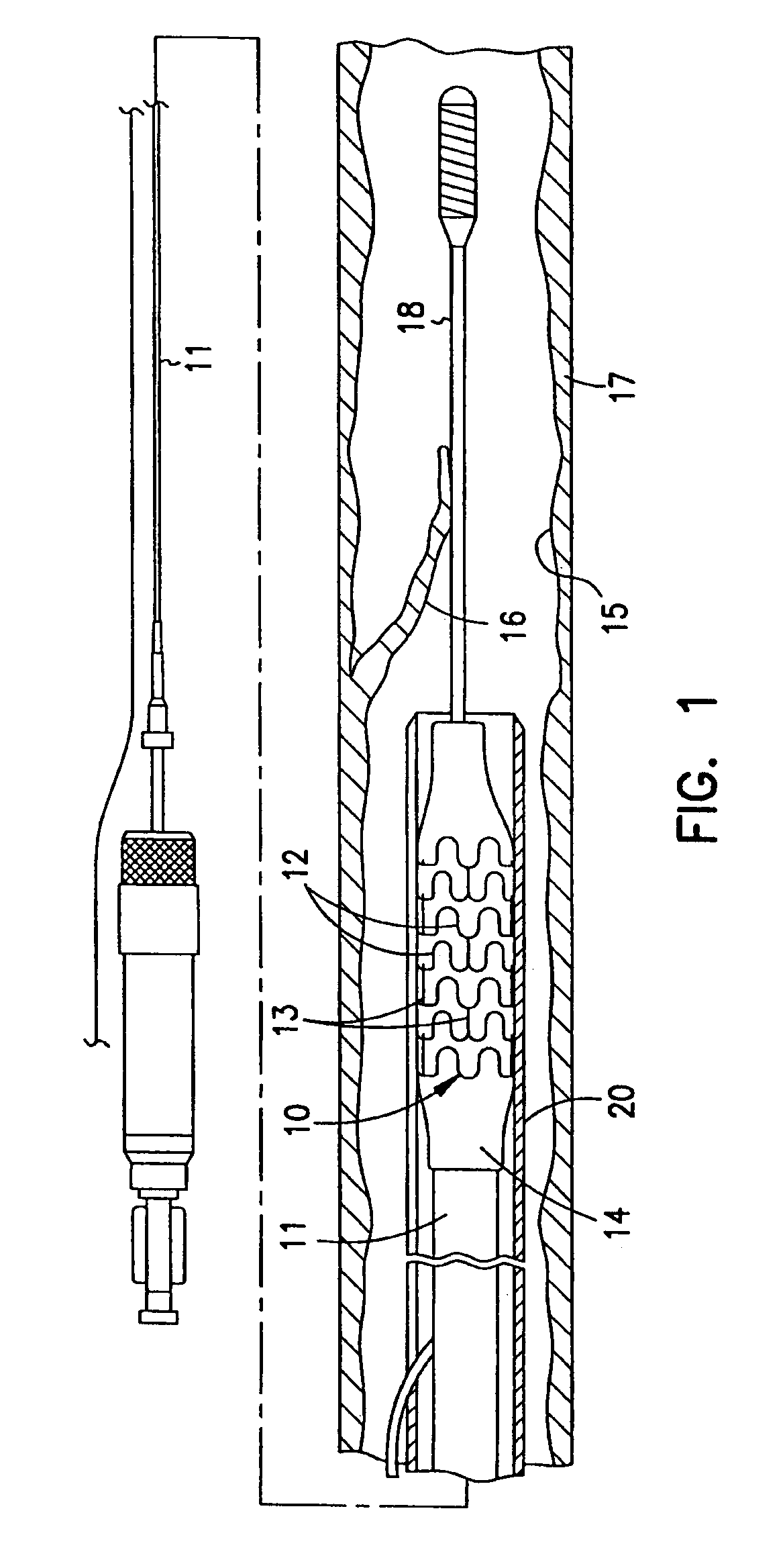Radiopaque intraluminal stent
a radiopaque, intraluminal technology, applied in the field of radiopaque intraluminal stents, can solve the problems of not allowing adequate stent visualization to assist in the determination of optimal deployment, and affecting the ability of the interventionalist to repair the lesion
- Summary
- Abstract
- Description
- Claims
- Application Information
AI Technical Summary
Benefits of technology
Problems solved by technology
Method used
Image
Examples
example 1
[0064]The alloy used was cobalt chromium L-605 per ASTM specification F90-97. Small diameter tubing was fabricated of fully solution annealed rod stock. After gun-drilling, the resulting tube was cold drawn down in stages. Between draws, the alloy was annealed to maintain ductility. Final dimensions of the tube were about 0.070 inches outer diameter by a 0.004 inch thick wall. The material passed the cytotoxicity and hemolysis test per ISO 10993 indicating a basic level of biocompatibility. A serpentine pattern was cut into the tubing utilizing a laser in a CNC controlled machine as depicted in FIG. 6. After laser cutting, the slag was removed from the stents by a combination of sonication and soaking in a mineral acid solution. Using a 4.0×20 mm ACS ROCKET™ balloon dilatation catheter the stents were expanded to 4.0 mm diameter. Inspection by light microscope and scanning electron microscopy confirmed that there were no cracks or broken struts in the stent indicating the alloy had ...
example 2
[0068]One other alloy suitable for use in the present invention is HAYNES alloy 188, which is a cobalt-nickel-chromium-tungsten alloy. This alloy has good ductility and is readily fabricated by conventional techniques, such as cold working, forging or other hot working methods. This alloy also shows good corrosion resistance to chloride and oxidizing environments. The 188 alloy is produced in the form of plate, sheet, strip, billet, bar, wire, pipe and tubing.
[0069]In rod form, the 188 alloy has an ultimate tensile strength of about 137 ksi, a 0.2% yield strength of 67 ksi and an ultimate elongation in 2 inches of 53%. The 188 alloy has a comparative impact strength after 8000-hour exposures of 143 ft.-lbs, solution-annealed Charpy V-Notch Impact test.
PUM
| Property | Measurement | Unit |
|---|---|---|
| Percent by mass | aaaaa | aaaaa |
| Percent by mass | aaaaa | aaaaa |
| Percent by mass | aaaaa | aaaaa |
Abstract
Description
Claims
Application Information
 Login to View More
Login to View More - R&D
- Intellectual Property
- Life Sciences
- Materials
- Tech Scout
- Unparalleled Data Quality
- Higher Quality Content
- 60% Fewer Hallucinations
Browse by: Latest US Patents, China's latest patents, Technical Efficacy Thesaurus, Application Domain, Technology Topic, Popular Technical Reports.
© 2025 PatSnap. All rights reserved.Legal|Privacy policy|Modern Slavery Act Transparency Statement|Sitemap|About US| Contact US: help@patsnap.com



